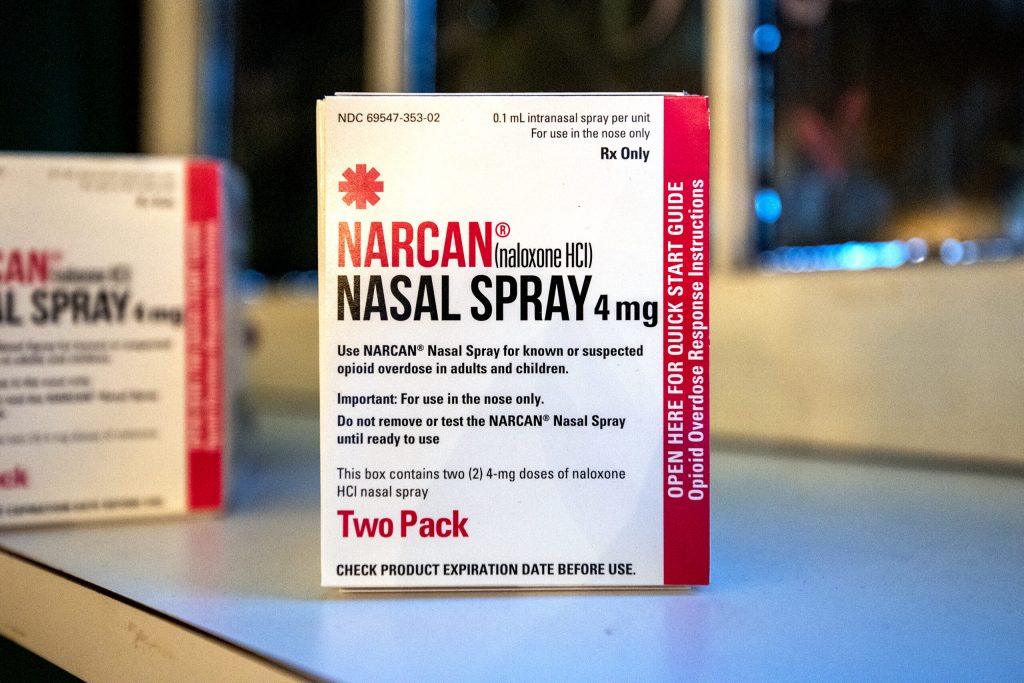‘Tranq’ Testing Strips Now Legal, Milestone In Overdose Crisis
Move comes as overdose deaths from xylazine on the rise in Wisconsin
![Pills by Tom Varco (Own work) [CC BY-SA 3.0 (http://creativecommons.org/licenses/by-sa/3.0)], via Wikimedia Commons.](https://urbanmilwaukee.com/wp-content/uploads/2016/11/1024px-Lexapro_pills.jpg)
Pills by Tom Varco (Own work) [CC BY-SA 3.0 (http://creativecommons.org/licenses/by-sa/3.0)], via Wikimedia Commons.
In 2022, the state decriminalized testing strips for the synthetic opioid fentanyl. And in late March, Gov. Tony Evers signed into law a bipartisan bill to do the same with testing strips that register the presence of xylazine, a narcotic sometimes known as “tranq” that can make opioids even more deadly.
“There is currently no xylazine reversal agent safe for human use, which means prevention is key,” said Evers in his bill signing statement. “By making these strips available, in addition to providing certain civil and criminal liability exemptions for people distributing or administering these products, we can help save more lives and help get folks on a successful path to recovery.”
Prior to the new law, the testing strips were considered drug paraphernalia. Advocates say that decriminalizing their usage is a step toward harm reduction.
Dr. Ritu Bhatnagar, an addiction psychiatrist at the University of Wisconsin School of Medicine who previously led the Wisconsin Society of Addiction Medicine, says testing strips will let people know what’s in their drugs, potentially allowing them to make safer choices in their usage. But she adds that it’s only a first step toward reducing drug deaths.
She argues that solving the crisis requires understanding why people begin abusing substances in the first place.
“There are always going to be other substances that we need to be concerned about,” she said. “Our responsibility, in my mind, is to try to pave the way for people to feel safe, if they’re struggling with any substance use, to try to get the help that they need.”
Overdoses on the rise
The new law comes as overdose deaths from drugs mixed with xylazine are on the rise nationally, with a recent spike in Wisconsin.
It has been especially prevalent in Milwaukee County, which is expected to see more than 200 such deaths this year, up from four in 2020. Last year, about a fifth of overdose deaths in the county were linked to xylazine-mixed opioids.
It is believed to have originally been added to opioids like heroin to extend the life of the high. But as it has entered the broader illegal drug supply, many people who use drugs mixed with xylazine don’t know what they’re taking. That can make already-deadly drugs like fentanyl even more dangerous.
Deaths are also rising in rural areas, according to state health department data. While men and women overdose in roughly equal proportions, men are more likely to fatally overdose.
The increase in fatal overdoses is in part because, unlike with fentanyl or heroin, xylazine — which is not an opioid — does not respond to the overdose-reversal medication naloxone.
‘Always going to be other substances’
Bhatnagar describes America’s overdose crisis in terms of “waves.” First came the flood of prescription opioids, like Oxycontin, in the 1990s. That gave way to heroin in the 2000s and synthetic opioids, like fentanyl, in recent years.
This fourth wave, as she describes it, involves mixed substances that make existing resources, such as naloxone, less effective.
Bhatnagar points to legislation introduced nationally that would affirmatively decriminalize drug testing strips regardless of substance.
“It is very challenging trying to figure out now what is going to be the next substance that we have to test for and be looking for,” she said. “If we can do a little bit of forecasting and change the legislation to be more inclusive of all drug testing supplies to help people be safe, then it’s really good policy.”
Nationally, about 109,000 people died of overdoses in 2022, and about two-thirds of those were caused by fentanyl, per the Centers for Disease Control and Prevention.
If you or someone you know is struggling with addiction, call the Wisconsin Addiction Recovery Helpline at 211 or text your ZIP code to 898211. You can also learn more about treatment options or how to respond to an overdose at: dhs.wisconsin.gov/opioids.
Testing for ‘tranq’ in opioids now legal in Wisconsin was originally published by Wisconsin Public Radio.
If you think stories like this are important, become a member of Urban Milwaukee and help support real, independent journalism. Plus you get some cool added benefits.



















